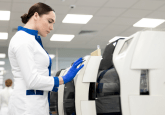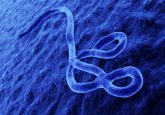Quantitative bioanalysis of strontium in human serum by inductively coupled plasma-mass spectrometry

Aim: A bioanalytical method using inductively-coupled plasma-mass spectrometry to measure endogenous levels of strontium in human serum was developed and validated. Results & methodology: This article details the experimental procedures used for the method development and validation thus demonstrating the application of the inductively-coupled plasma-mass spectrometry method for quantification of strontium in human serum samples. The assay was validated for specificity, linearity, accuracy, precision, recovery and stability. Significant endogenous levels of strontium are present in human serum samples ranging from 19 to 96 ng/ml with a mean of 34.6 ± 15.2 ng/ml (SD). Discussion & conclusion: Calibration procedures and sample pretreatment were simplified for high throughput analysis. The validation demonstrates that the method was sensitive, selective for quantification of strontium (88Sr) and is suitable for routine clinical testing of strontium in human serum samples.
Strontium is an alkali earth metal and has chemical properties similar to its neighboring elements calcium and barium. Strontium metal is found naturally and exists in the +2 oxidation state in four stable isotopic forms (88Sr at 82.6%, 86Sr at 9.9%, 87Sr at 7.0% and 84Sr at 0.6%) [1]. Strontium is found naturally in the environment including drinking water and food. It is used industrially to produce colored television tubes and to add color to ceramics, glass and fireworks.
Click here to view the full article.






